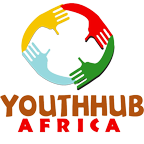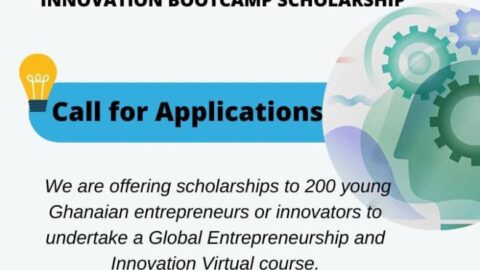Life is a gift. We should learn to appreciate it irrespective of our circumstance, while learning to trounce the challenges on our paths. Last week, I was guest speaker at the Gathering of Eagles Summit hosted by Ile-Ife, Osun State based Success Touch. I spoke on the emergence of crusaders in the polity. Later, Tolu Olawuni, a visually impaired young person took the stage. My attention was further drawn to him when he said he was a regular user of a number of social media platforms. Tolu, though totally blind, is on Whatsapp, Facebook, LinkedIn and also tweets @tolexdicon
Tolu’s intrepid ability to browse the Internet and to use the various social media platforms, in spite of his limitation may not be novel, but it is encouraging and illuminating. He is following closely in the heels of similarly visually challenged folks who have taken out time to understand their challenges and autonomously proffer solutions to them. Chen Guangcheng, the Chinese civil right activist who is self-taught in law; Stevland Hardaway Morris, the one we call Steve Wonder, the American musician and songwriter who crooned the lyrics of ‘I just called to Say I love you’ and winner of 23 Grammy Awards; Louis Braille, the inventor of the revolutionary Braille system of reading and writing for the visually impaired, are some of the people that the blind around the world have come to draw inspiration from. Others include Homer, the ancient Greek poet and author of the Iliad and Odyssey; David Peterson, the 55th Governor of New York who left office in 2010 and Helen Keller, the American author, activist and academic.
According to the World Health Organisation, 285 million people are estimated to be visually impaired worldwide. About 39 million are blind and 246 have low vision. Of this figure, about 9 per cent of the world’s visually impaired live in developing countries. Nigeria, according to reports, is currently home to about 4.25 million people who are blind or suffer varying degree of visual impairment. People who are blind lead tough lives. It is even tougher in climes like ours where social services are difficult to access by those with sight; much more for those without it. For young people with sight, one of the activities or hobbies we have come to love is surfing the web. We click on the links we want to read; we comment on updates that catch our attention and chat with other people using the numerous social networks now at our beck and call. How easy however is it for people who are blind or suffer some form of visual impairment to do same?
When Tolu told the audience that he owned a computer, has a Facebook identity and is capable of chatting on Whatsapp, not a few people were astonished. It was thus only naturally that the moderator and convener — Abiola Isawumi had to request further explanation and I also spoke with him later following exchange of calls and text messages. With an N5 Nokia phone, Tolu makes calls, texts and interacts on Whatsapp. He accesses his Facebook account and the internet using his laptop which has a Non-Visual Desktop Access, NVDA — an assistive technology that helps him to read content on the computer and then click on the one he feels prompted to read. Mozilla Firefox is the favourite of the browsers given its huge compatibility with such assistive technology. BlackBerry is a not a favourite for people like Tolu since there is no mobile speak device on it. The Nokia screen reader, a free voice-over app helps him to access text messages and other related information that he desires. Although it is free, there are paid ones like ‘Talks’ which also offer similar service for a fee.
After acquiring a new cell phone, what Tolu does is to gain mastery of the keyboard or touch screen of the phone. He gets someone to run him through the peculiarities of the phone, telling and pointing to him where the menu tabs are and with the menu tones, he becomes familiar with the phone. Tolu later explained to me that his ability to use his ears excellently is what makes his new media experience unique and enjoyable for him. He gains “access to The Punch newspaper content through social media pages as well, and the assistive technology reads out the headline. If it is a story I want to read, then I click….”
It is however still a tough task for people with visual disability considering the volume of words they have to listen to before making simple choices as to where to navigate on web pages or not. Adverts in large numbers on web pages also make access to information on some sites also difficult. Assistive technology products have made access to information on computer screens and smart phones possible, even PDF documents as well. One of the major reasons why people patronise the new media is because it has become the new repository of information. Shutting people without sight out of it further keeps them in darkness.
The CAPTCHA (Completely Automated Public Turing test to tell Computers and Humans Apart”), anti-spam programs initially stopped people with vision problems from accessing social media platforms without assistance. But with the audio version of CAPTCHA now being offered by many social networking sites, the knowledge that blind people also use these networks is becoming a major consideration in programming designs. People with good sights use the visual CAPTCHA. While Facebook, Twitter and their several allies were not designed with the visually challenged in mind, AudioBoo actually was; ditto inclusiveplanet.com, an India based social start-up. The former is an audio focused social network designed to aid connection by blind people using audio. Once voice over and screen readers are activated on mobile phones, the user is ready to create, listen and even share audio contents. Users listen on other conversations or sounds (called boos) and can boo back or like another boo.
Tolu also recommended that his audience watch ‘Facing the Giants’; a lucid indication that he watches movies. For more than an hour last week while working on some other things on the system, I tried to copy Tolu’s experience. I randomly played a movie on my system and listened through to the end without seeing the visuals. But like we do when reading novels; I leaned on imagination. It was a digital interaction between my mind and what I was listening to. Imagination may after all be all for the visually impaired. When later I tried looking at the visuals, it was with an appreciative disposition.
We chat with people online but we really do not know all the people we communicate with. We don’t know if they have any physical challenge. It really should not count anyway. That knowledge may however serve research purpose. The inclusion of the blind in the mainstream of human interaction is what is of essence. For them, the use of assistive technology is their channel to enjoy the new media experience. Once the use is mastered, then it is time to begin the digital dealings. With the new media, it seems there is something for everyone!
@SolaFagro on Twitter







